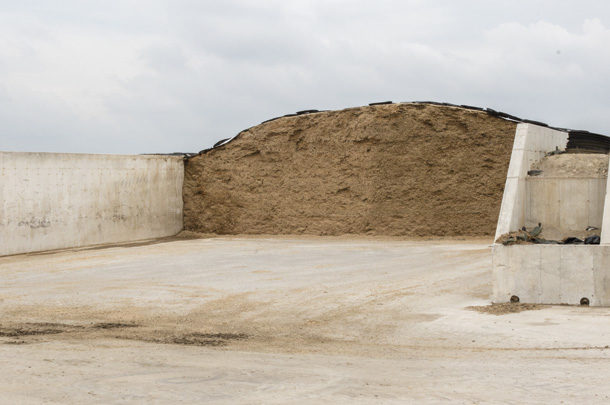When chopping the silage, have you considered what length of cut (LOC) is going to help improve storage efficiency and animal uptake? Do you know how consistently your forage harvester is chopping to a designated LOC?
Has the operator checked the following to ensure optimum chopping performance?
- Sharp knives
- Adjusted shear bar (Adjust your shear bar twice as often as sharpening the knives in grasses.)
- Tight drum bottom to the cutter head
- Optimal blower paddles
- Auto-lubrication system fully functional
Recommendations on knife sharpening and shear bar adjustment include having a forage harvester equipped with forward and reverse sharpening and having in-cab adjustments without leaving the operator seat. Having both forward and reverse sharpening options maximizes the life you can get out of a knife and prevents the heel edge of the knife from coming into contact with the shear bar without manual grinding. Some good practices for the chopper operator would also include properly adjusting the seat, armrests and console to ensure all-day comfort in the cab.
Maximizing your feed while in storage
With all the work and planning that goes into growing and harvesting a good silage crop, the storage of the crop can often be an afterthought. Storage of feed is a very important factor in the quality of the feed when it is fed to livestock. Feed storage and packing also play a factor in dry matter loss during the fermentation process. During the fermentation process, bacteria converts the sugars in the feed into acid, which drops the feed’s pH level and preserves the feed.
To accomplish proper fermentation, oxygen must be eliminated from the feed. If an anaerobic (oxygen-free) environment is not created, the silage will not ferment but spoil. Once the oxygen has been limited, the bacteria and enzymes from the plant will use the plant cells as an energy source; this helps to break down the feed into more digestible proteins and simple sugars. As the feed continues to ferment, lactic acid bacteria will increase as it thrives in an anaerobic environment with sugar and moisture.
It is important that the lactic acid bacteria work quickly to lower the pH level to preserve nutrition for the livestock. Once the bacteria have stopped growing, the feed will be stabilized and can be preserved in the oxygen-free environment until it is fed to the livestock.
Creating an anaerobic state
The first step in creating an anaerobic environment is to compress the feed to expel as much oxygen as possible. When packing in a bunker or pile, it is suggested that you do not try to pack more than 6 inches of feed at a time to ensure proper compaction. A good pack job will affect the feed quality as well as the amount of losses that accrue during storage.
The common calculation used to determine how much feed can be properly packed by a tractor is to take the weight of the tractor and divide it by 800 to get tons per hour that a tractor can pack. So if your tractor weighs 32,000 pounds, you should be able to pack 40 tons of feed an hour.
Once the feed has been sufficiently packed and as much oxygen as possible has been removed from the feed, it needs to be sealed. The better the seal, the faster the lactic acid can begin to work, leading to less dry matter loss. This is most commonly done with plastic, which is held down by tires or sand bags. I have seen in recent years more farms putting plastic on the sidewalls of their bunkers to help seal the edges better and prevent feed spoilage from cracks in the bunker walls. Once the feed is properly sealed, it can be stored until it is time to feed the product out to the livestock.
Improved fermentation
One of the ways we can improve on the fermentation process is to add inoculant to the feed when harvesting. All plants have naturally accruing bacteria that will help break down and ferment the plant, but by using inoculant we can better control the silage pH level, have greater lactic acid content, improve digestibility and lower dry matter loss. There are many different types of inoculant available with varying benefits, but most inoculants contain lactic acid, which helps to decrease the length of fermentation, in turn decreasing dry matter losses. If inoculants are not part of your feed storage plan, it may be time to look at the benefits of them.
As all producers look for ways to maximize their profits, now is the time to look at all aspects of the operation, even those that seem minor like feed storage. By effectively decreasing dry matter loss while increasing digestibility, you can have more feed in the pile with a high feed value, helping increase your bottom line. ![]()
PHOTO: By effectively decreasing dry matter loss while increasing digestibility, you can have more feed in the pile with a high feed value, helping increase your bottom line. Staff photo.
Luke Loos is an SPFH technical specialist with New Holland Agriculture.

-
Bradley Wenger
- SPFH Sales and Marketing Manager
- New Holland Agriculture
- Email Bradley Wenger












